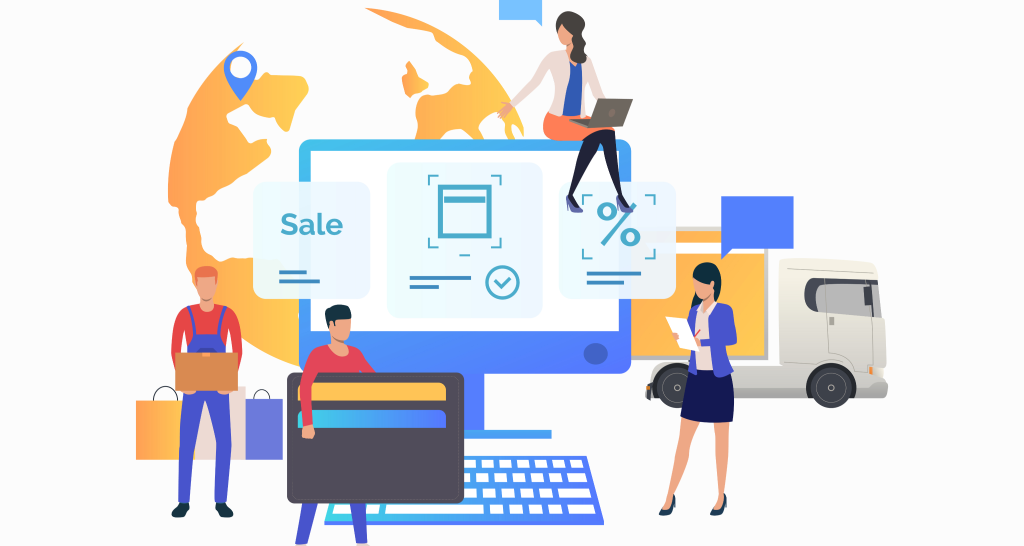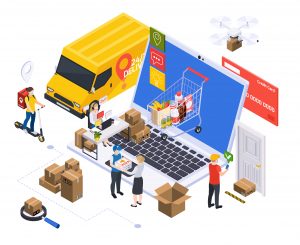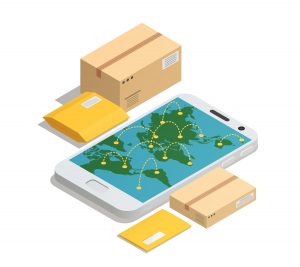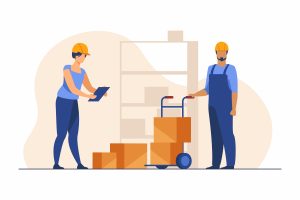

An innovative approach to fulfillment in e-commerce: how to reduce costs and improve efficiency?
The growing importance of fulfillment in e-commerce constantly imposes new challenges and needs for companies. Companies are looking for innovative approaches to order processing in response to these challenges. What specific innovations can reduce costs and improve fulfillment efficiency? It is worth looking at aspects such as cheaper packaging, flexible employment, and outsourcing. However, before we dive into the potential benefits of these solutions, it is also worth identifying the challenges associated with their implementation. Here is a complete guide to innovations in the area of fulfillment for e-commerce.
Fulfillment innovations in e-commerce
With the growing demand for online shopping, e-commerce companies are looking for new ways to reduce fulfillment costs. Innovations in this area can deliver significant savings, improve efficiency, and provide better customer service.
As part of fulfillment innovation in e-commerce, logistics companies focus on several solutions that, from the customer’s point of view, can bring tangible benefits to their business. Such innovations include:
- Automation
The introduction of automation effectively improves modern fulfillment processes. Streamlining packaging and shipping processes using machines and robots can significantly reduce labor costs. For the customer, this means further savings, faster shipments, and more effective delivery in a relatively shorter time.
- Optimization of warehouse space
Thanks to well-optimized warehouse space, the storage and storage of customer products reduces the costs of storing goods. In this context, modern logistics companies use high-storage racks or RFID technology (i.e., a modern radio data identification system that increases the efficiency of processes such as planning, steering, and controlling the flow of goods from suppliers to the enterprise). Taking the example of OEX Fulfillio, flat surfaces, shelves, racks, and modern mezzanines are offered to meet customers’ needs.
- Strategic partnerships
For large e-commerce entities, establishing strategic cooperation with external fulfillment companies can bring many benefits. First of all, such partnerships allow us to take care of the entire logistics process using new technologies and well-developed know-how. For the client, such a partnership means lower fulfillment costs without investing in its infrastructure.
By entering into a strategic partnership with OEX Fulfilio, customers are provided with a wide range of services supporting e-commerce companies in infrastructure, storage, packaging, sending, delivery, and handling returns and complaints. Our customers can count on professional warehousing services and preferential delivery costs.
Reducing operational costs is crucial for every e-commerce customer. To better illustrate this state of affairs, it is worth looking at global companies that have introduced fulfillment innovations.
- Amazon uses robots to pack and ship orders, which has saved it billions of dollars.
- IKEA uses an RFID system to track goods in the warehouse, which has helped it optimize its picking and packing processes.
- DHL Express works with e-commerce companies to develop individual fulfillment solutions tailored to their needs and budget.
The above examples show fulfillment innovations as a dynamically developing area. E-commerce companies that want to remain competitive should constantly monitor the latest trends and implement appropriate solutions.
How else can you reduce fulfillment costs? According to our specialists who work with e-commerce companies daily, it is crucial to establish cooperation with suppliers who offer competitive prices and services. It is worth recognizing the market and available services that target the customer’s needs while taking care of their wallet. As part of cooperation in fulfillment, monitoring fulfillment costs and identifying areas where they can be reduced are essential aspects of making decisions and maintaining the service.
The fulfillment area itself is also changeable, and innovations always appear. Therefore, openness to new fulfillment solutions can bring real benefits and savings because this area is open to technological development.
“E-commerce companies are focused on providing the right CX (customer experience) to their customers, which is why it is so important to provide modern solutions that will improve both processes and the overall assessment of services. Customers value the effect above all: tracking shipments and simple return procedures make customers feel confident and satisfied. They also value speed and accuracy, and automation helps ensure these. Customer experience management in the fulfillment service is one of the key elements of success in today’s e-commerce world. CX optimization is crucial, especially in automation, hyper-personalization, and headless solutions.”
Arkadiusz Filipowski, president of the management board of OEX Fulfilio.
Potential benefits of using innovations in the area of e-commerce
The use of fulfillment innovations is becoming increasingly crucial to success in the e-commerce industry. The market is developing dynamically, and consumers expect increasingly faster and more personalized service. Traditional fulfillment models are no longer able to meet these challenges.
The latest research and forecasts by industry specialists indicate that in 2024, more and more companies will use automation and robotics in warehouses. Fulfillment on demand is also gaining popularity as a way to reduce costs and increase flexibility.
What potential financial benefits can a well-designed and functioning fulfillment bring from using innovations in e-commerce?
Cheaper packaging
Packaging generates significant expenses in the e-commerce supply chain. Many factors, including material, size, shape, and type of closure used, influence their price.
One of the critical aspects is the selection of appropriate materials. Cheaper alternatives, such as cardboard, paper, or foil, can significantly reduce the final packaging cost. The choice of printing method also plays an important role. Due to its larger production scale, offset printing generates lower costs than digital printing. Packaging costs can also be optimized by negotiating prices, mainly if orders concern larger quantities of packaging.
Moreover, it is worth mentioning that there are other strategies to address the issue of cheaper packaging. We consider aspects such as optimizing packaging sizes, using reusable packaging, or cooperating with companies offering ecological packaging.
Modern sorting technologies
Modern sorting technologies are a key factor in improving the process of packing and shipping goods in e-commerce. Sorting automation, based on parameters such as size, weight, or product type, brings several benefits for companies. These include:
- Error reduction
Automatic sorting eliminates the risk of human errors, which translates into fewer packing and shipping errors.
- Reduction of order processing time
Fast and precise sorting allows for rapid completion of orders and preparation for shipment, which means shorter waiting times for the customer.
- Increased efficiency
Automated sorting systems can process large amounts of goods quickly, significantly increasing the entire process’s efficiency.
- Cost optimization
Automation allows you to reduce the costs associated with employing and training employees for manual sorting.
- Scalablity
Sorting systems can be easily scaled depending on the company’s needs, allowing flexible adaptation to changing workloads.
It is also worth mentioning the additional benefits resulting from the above aspects. As a fulfillment operator, you can track shipments in real time thanks to modern IT tools. This indirectly improves inventory control. However, from the work point of view, the operator ensures increased work safety and ergonomics of the workstation.
The tangible benefits of developing an excellent modern sorting strategy can significantly increase customer satisfaction. Through quick and error-free order fulfillment, customers evaluate the service better, and, as a result, the competitive position in the market is strengthened. Companies implementing innovative technologies have proven to be ahead of the competition and gain greater customer trust.
In addition to the apparent benefits described above, the improvement of processes through the use of new technologies is worth mentioning. An example may be the interest in tools based on developing artificial intelligence technologies. They can be used to optimize sorting processes. It is also worth looking at the integration of sorting systems with other warehouse and ERP systems while ensuring that sorting systems are adapted to the company’s individual needs.
Optimization of logistics processes
Optimizing logistics processes is a powerful tool for e-commerce companies that want to reduce fulfillment costs. By implementing appropriate solutions, companies can significantly reduce expenses in this area and thus increase their profitability.
One of the critical elements of optimization is implementing a warehouse management system (WMS). WMS systems improve inventory management, shipment planning, and shipment tracking, which translates into several benefits. These include, among others:
- Better control over inventory by monitoring the availability of goods in real-time. Thanks to this, warehouse stockpiles and stock shortages are avoided.
- Shipping optimization helps you choose the best shipping options and automates the process of preparing orders for shipping.
- Real-time shipment tracking lets you inform customers about order status and prevent delivery problems.
In addition to implementing a WMS system, companies can also use other strategies to optimize fulfillment costs. These include, among others, the ability to optimize delivery routes. For this purpose, route planning tools are used, which optimally help in selecting the shortest and most efficient routes. Effect? Reducing transport costs.
In turn, to reduce shipping costs, order consolidation is used, i.e. combining orders sent to the same customer.
Also worth mentioning is the possibility of cooperating with courier companies to negotiate contracts and obtain more favorable shipping prices. Thanks to this, e-commerce companies gain more significant savings, and customers can benefit from a more favorable price list of services.

(source: www.freepik.com)
Integration of automation in warehouses
Integration of automation in warehouses is becoming an increasingly common phenomenon in the e-commerce industry. No wonder, because automation offers a number of benefits that translate into a significant reduction in fulfillment costs and an increase in the efficiency of the entire process.
To achieve good results in reducing fulfillment costs, operators introduce automation, among others, in the area of order picking. In this case, robots and automation systems can take over the tedious and time-consuming task of order picking, which allows for a significant increase in the efficiency and precision of this process.
The packaging process may also undergo quite a revolution. By using automatic packaging systems, it is possible to adjust the size of the packaging to the product and optimize it. This, in turn, significantly saves time and materials.
In the case of shipping, sorting automation improves logistics and shortens order fulfillment time. The result of this action is faster and more efficient sending for delivery.
In addition to reducing costs and increasing efficiency, warehouse automation brings a number of other benefits:
- Improving work safety
Thanks to the use of robots, dangerous or burdensome tasks for humans are eliminated. This, of course, increases work safety in the warehouse.
- Better ergonomics of the workstation
Automation eliminates the need for employees to perform repetitive and tiring activities.
- Scalablity
Automation systems can be easily scaled depending on the company’s needs, which allows for flexible adaptation to changing workloads.
Challenges related to the implementation of innovative fulfillment solutions
Despite promising benefits, implementing innovative solutions in fulfillment also involves particular challenges. These include migration to new systems. This, of course, requires time and resources, as well as training of employees in the context of using new technologies. This brings several possible problems that need to be identified and an appropriate solution found, as they are related to system integration and maintaining operational continuity.
Exploring innovative solutions in the area of fulfillment is not only a matter of cost reduction but also an opportunity to increase competitiveness and operational efficiency in a dynamic e-commerce environment.
Assumptions and calculations of fulfillment in e-commerce
The introduction of the above fulfillment innovations also brings further calculation-related challenges. To calculate potential savings from introducing changes to the fulfillment process, certain assumptions must first be made. These are:
- Order volume: The larger the order volume, the greater the savings that can be achieved from changes.
- Prices of services and goods: They influence the level of fulfillment costs.
- Labor costs: They influence the amount of fixed costs of fulfillment.
After determining the assumptions, you can start calculating potential savings. To do this, you need to compare the costs of fulfillment in its current state with the costs if changes were introduced.

(source: www.freepik.com)
Conversion of fixed costs into variable costs
One way to reduce fulfillment costs is to replace fixed costs with variable ones. This can be done, for example, by:
- Outsourcing
It involves hiring an external company to perform certain services currently performed in-house. This solution works well when there are insufficient human or hardware resources.
- Dropshipping
This is an alternative way to sell goods when it is impossible to store them. This solution is ideal for small e-commerce companies that do not need to rent warehouse space for their products.
- Trade in own products
In this case, the client works in a system of producing goods to order, in quantities corresponding to the orders. Then there is no need to store unsold products.
Employment optimization
Another way to reduce fulfillment costs is to optimize employment. We may reduce the number of excess employees if their work is not essential to running the business. A less drastic step is to reduce jobs, i.e., reductions to less than 40 hours a week while maintaining the same number of employees. An increasingly noticed trend is the automation of processes, which leads to replacing employees with machines and automatons.
Lower packaging costs
We mentioned above that the way to save money in fulfillment is to propose lower packaging costs. They can be lowered by using cheaper materials. However, this is due to their lower quality. An alternative to this step is to reduce the size of the packages, i.e., use smaller packages. This translates into savings in materials and transport. As a conscious entrepreneur, it is worth paying attention to recycled materials or reusing packaging, e.g., reusable ones.
Lower delivery costs
How to reduce delivery costs? First, you should focus on good market research and choose the cheapest carrier or one that offers competitive service prices.
The fulfillment operator can also develop and propose optimal delivery routes, i.e., plan them in such a way as to minimize transport costs.
It is also worth understanding that the number of shipments can significantly affect delivery costs. Currently, many companies have decided to consolidate deliveries, i.e., order the delivery of several products simultaneously.
The innovations highlighted above have their justification in financial terms. Let’s look at an example.
Let’s assume that an online store sells 100,000 product units per year. The current fulfillment costs amount to PLN 10,000,000. After introducing the changes, the mentioned costs will be reduced to PLN 8,000,000.
In this case, the potential savings are 20%, i.e. PLN 2,000,000. This means the store can save PLN 20,000 per month or PLN 240,000 per year.
Of course, the savings may be more or less, depending on specific conditions. However, even small savings can significantly impact a store’s finances.

(source: www.freepik.com)
Innovative solutions
We discussed traditional methods of reducing fulfillment costs. However, there are more innovative solutions that conquer the market and cause companies to develop faster in the area of e-commerce.
Thanks to robotization, i.e., using machines to perform specific tasks, companies save time and the labor necessary. Tasks in which this innovation works include packaging products or picking orders.
Efficient warehouse management, shipments, and receipt of goods can only be done with intelligent management systems. Using modern IT tools to automate fulfillment processes is now an everyday reality for many companies. Moreover, they help make decisions based on well-illustrated data and calculations based on information collection.
Logistics models in the area of e-commerce
Modern fulfillment is based on two pillars: specialized warehouse spaces and qualified logistics staff. Combined with appropriate strategies and technologies, these two elements create an efficient order fulfillment system crucial for e-commerce success. It is worth mentioning that the choice of the proper logistics model depends on many factors, such as the size and specificity of the online store, the volume of orders, the company’s development strategy, and, of course, the budget.
In the context of fulfillment, we can distinguish two basic logistics models:
- Own warehouse
In this model, the online store has its own warehouse space to store its products. The company is responsible for keeping, picking, and shipping orders.
- External warehouse (fulfillment provider)
In this model, the online store uses the services of an external company specializing in fulfillment. This company ensures storage, picking, and shipping of orders on behalf of the store.
A thorough analysis of these factors will allow you to choose the model that best suits your company’s needs and ensure optimal order fulfillment.
Own warehouse
Your warehouse gives the online store complete control over fulfillment processes. The store can set rules for handling orders and adapt them to its needs.
The advantages of having your warehouse include:
- Full control over processes: The store can independently set the rules for handling orders and adapt them to its needs.
- Possibility to adapt the warehouse to your needs: The store can adjust the warehouse to its needs in terms of size and location.
- Ability to control costs: The store has complete control over fulfillment costs because it does not have to incur outsourcing costs.
The disadvantages of having your warehouse include:
- High initial costs: Investing in your warehouse is financially and logistically expensive.
- Operating costs: The store must bear operating expenses related to maintaining the warehouse, such as rent, electricity, and employment of employees.
- Limited flexibility: A store may have limited flexibility in handling orders because it must adapt to the capacity of its warehouse.
External storage
An external warehouse is a solution that allows online stores to avoid the costs of having their warehouse.
The advantages of using an external warehouse include:
- Low initial costs: The store does not have to bear the costs of purchasing or renting a warehouse.
- Limited operating costs: The store only bears the costs associated with using the services of an external company.
- High flexibility: The store has excellent flexibility in handling orders because it can use the services of different companies.
The disadvantages of using an external warehouse include:
- Less control over processes: The store has limited control over fulfillment processes because it has to rely on an external company.
- Possibility of losing control over costs: The store may have difficulty controlling fulfillment costs because it has to bear the costs of external company services.

(source: www.freepik.com)
Choosing a logistic model
Choosing the right logistics model in fulfillment is crucial for cost optimization, scalability, and customer satisfaction. There is no universal answer – the best model depends on many factors specific to a given company. So, let’s focus on the essential aspects that allow you to choose the best logistics model.
- Sales object
If we have stationary points that support online business, we can integrate them with fulfillment systems, using them to complete online orders. This ensures inventory optimization and reduces shipping costs. Lack of stationary points: Without them, the choice comes down to your warehouse or external fulfillment.
- Sales volume
In the case of large sales, having your own warehouse is, of course, justified. It provides greater control and operational flexibility. However, if we are dealing with small sales, it is worth using external fulfillment. This is a more profitable solution due to lower fixed costs.
- Assortment
When you have a diverse range of products, greater storage flexibility may be required. Therefore, it is good to have access to your warehouse in such a situation. A narrow range of products does not impose such an obligation on the company. In such a case, you can successfully use external fulfillment, reducing costs and gaining access to specialized infrastructure.
- Demand for fulfillment services
Stores that need services such as returns, complaints, or personalization of shipments can take advantage of the rich offerings of fulfillment companies. For standard needs, both in-house storage and external fulfillment may be suitable.
What else is worth paying attention to?
Each investment in innovation assumes a specific budget within which stores can consider introducing fulfillment innovations.
If the budget is not very flexible, it is worth considering external fulfillment to achieve lower initial costs. In turn, your warehouse allows for easier scaling as the company grows. External fulfillment, on the other hand, offers the flexibility to scale without investment.
If you are starting an e-commerce business, having your warehouse requires experience in warehouse management. External fulfillment provides access to the knowledge and infrastructure of a company specializing in this field.
Selecting a logistics partner to provide fulfillment services in e-commerce
Choosing the logistics partner to provide e-commerce services is crucial to the success of an online store. Efficient order processing and customer satisfaction depend on the partner.
When choosing a logistics partner, consider the following factors:
- Pricing: Pricing for fulfillment services is one of the most important factors when choosing a partner. It would be best to compare different companies’ prices to find the best offer.
At OEX Fulfilio, we flexibly adjust costs to satisfy every smaller and corporate client.
- Scope of offer: The logistics partner should offer a wide range of fulfillment services to meet the online store’s needs. The basic fulfillment services include warehousing, order picking, shipping, and returns handling.
The OEX Fulfilio offer includes a whole package of services that the customer can take into account.
- Capacity (SLA and KPI): The logistics partner should be able to handle the online store’s demand. You should check whether the partner has adequate warehouse and logistics facilities to handle the store’s current and future sales. It’s also worth checking the partner’s SLA (Service Level Agreement) and KPI (Key Performance Indicators) to ensure they provide sufficient service.
Prices of fulfillment services for e-commerce
Prices of fulfillment services in e-commerce are not universal and depend on many factors specific to a given online store and its needs. A thorough understanding of these factors allows you to choose the optimal solution and negotiate favorable prices with your logistics partner.
So, what influences the prices of fulfillment services?
Order volume, which defines costs. The more orders an online store generates monthly, the lower unit prices it can negotiate with the fulfillment company. For smaller online stores, prices may be higher, but options are still available to suit their needs and budget.
If we are dealing with simple products of small size and low value, their storage and shipping are usually cheaper. In turn, products with large dimensions, unusual shapes, high weight, or value require special storage and shipping conditions, which generates higher costs.
Another factor is the location of the partner and warehouse. The proximity of a logistics partner to an online store can reduce transportation costs and shorten delivery times. Warehousing in different locations can benefit online stores that want to serve customers from other regions.

(source: www.freepik.com)
Scope of the fulfillment service offer for e-commerce
The logistics partner should offer various fulfillment services to meet the online store’s needs. Basic fulfillment services include:
- Storage: The logistics partner stores the online store’s products in its warehouse.
- Order picking: The logistics partner picks orders following the online store’s instructions.
- Shipping: The logistics partner ships orders to the online store’s customers.
In addition to these core services, a logistics partner may also offer additional fulfillment services such as:
- Returns handling: The logistics partner accepts product returns from online store customers.
- Complaints: The logistics partner handles product complaints from online store customers.
- Marketing: A logistics partner can help an online store with product marketing.
OEX Fulfilio provides various additional services tailored to the client’s needs.
Capacity (SLA and KPI) for e-commerce fulfillment service
The ideal logistics partner has the appropriate capacity to handle the online store’s needs. You should check whether the partner has adequate warehouse and logistics facilities to handle the store’s current and future sales. It’s also worth checking the partner’s SLA (Service Level Agreement) and KPI (Key Performance Indicators) to ensure they provide sufficient service.
SLA (Service Level Agreement) is a document that defines the standards of services provided by a logistics partner. SLA contains information about how quickly the partner will process orders, how often he will provide reports on his activities, and whether he will provide technical support.
KPIs (Key Performance Indicators) allow you to assess the performance of a logistics partner. KPIs may concern order processing time, delivery costs, or the level of customer service.
Summary
An innovative approach to fulfillment in e-commerce is a topic that is becoming more and more popular. E-commerce companies are looking for new ways to reduce costs and improve order processing efficiency.
Innovations in the area of fulfillment can bring significant benefits, including:
- Lowering costs
- Improved performance
- Better customer service
The most popular fulfillment innovations include:
- Automation
- Optimization of warehouse space
- Strategic partnerships
- Cheaper packaging
- Modern sorting technologies
- Optimization of logistics processes
- Integration of automation in warehouses
- Eco-friendly packaging materials
The implementation of innovative solutions in the area of fulfillment also involves particular challenges, such as:
- High initial costs
- The need to adapt employees to new technologies
- Possibility of system integration problems
Implementing innovative fulfillment solutions is a complex process that requires appropriate preparation. However, the benefits you can get from it can be significant.
If you want to reduce costs and improve order processing efficiency, consider implementing innovative fulfillment solutions.
If you are interested in taking action to introduce innovative services for your e-commerce, don’t hesitate to contact us.


